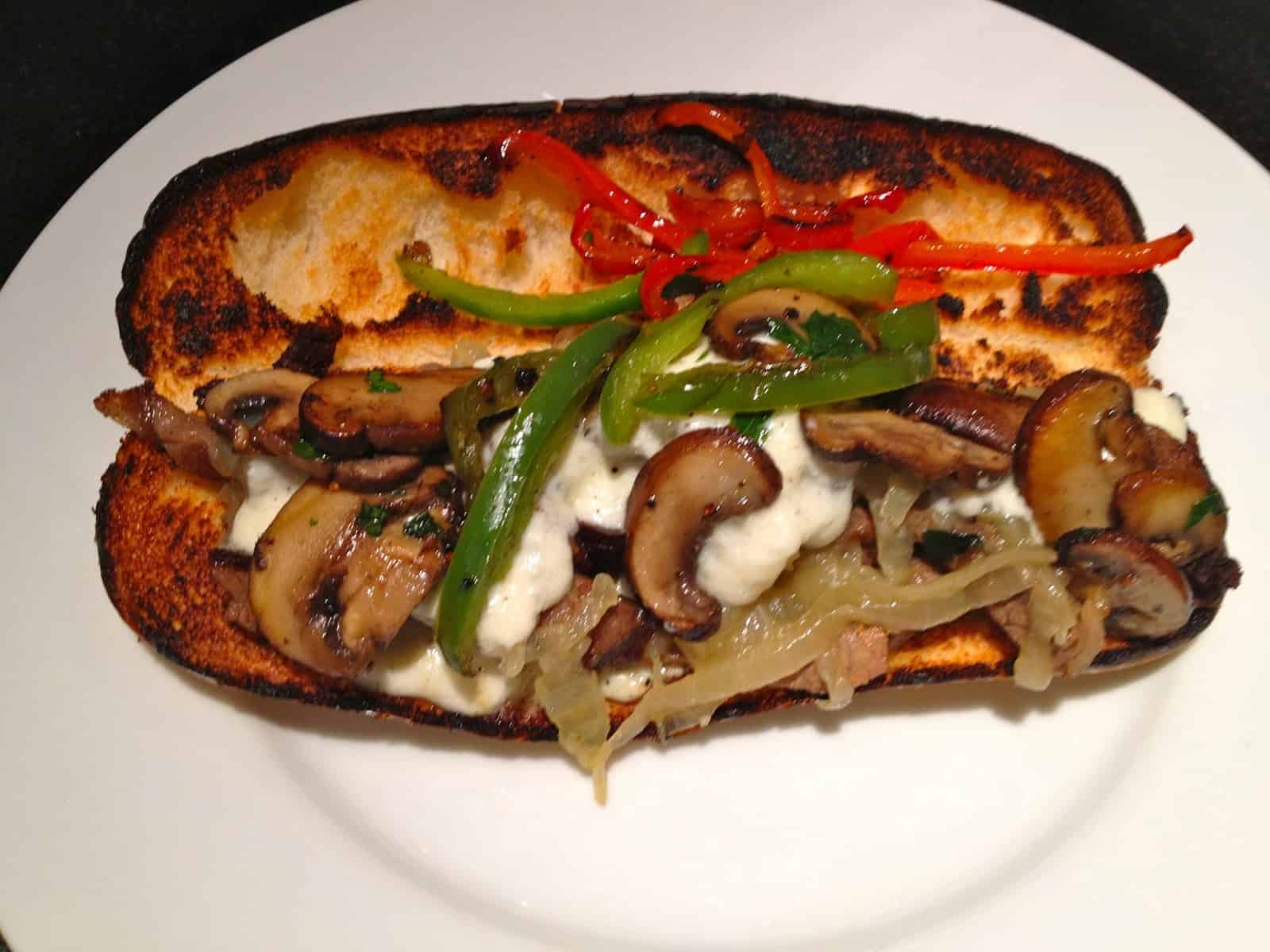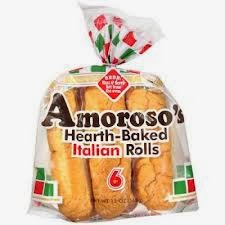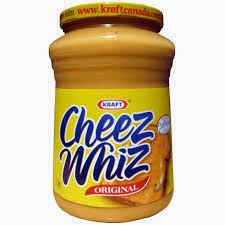 |
The real deal from Pat’s
The King of Steaks |
The Philly Cheesesteak, according to the Historical Society of Pennsylvania, was developed in the early 20th century “by combining frizzled beef, onions, and cheese in a small loaf of bread.” That prosaic description has nothing on the street version of the story: Of course, like all food stories, there are always debates about origins but this is the one I liked best. Two brothers, Pat and Harry Olivieri owned a hot dog stand, and likely beyond tired of a steady diet of dogs, made themselves a sandwich using chopped beef and grilled onions. While Pat was enjoying his invention, a cab driver stopped by and asked for one for himself. After eating it, the cab driver suggested that Olivieri quit making hot dogs and instead
 |
| The Original Pat’s King of Steaks |
focus on the new sandwich. The brothers took his advice, and began selling this variation of a steak sandwich at their stand near Philadelphia’s Italian Market. They became so popular that Pat opened up his own restaurant, still operating today as “Pat’s King of Steaks”. Originally prepared without cheese, Pat gives credit for the addition of provolone to a manager of one Olivieri’s burgeoning chain, Joe “Cocky Joe” Lorenza. The cheesesteak has travelled far and wide but kept its moniker. It is almost universally called a Philly Cheesesteak.
Recipe for Philly Cheesesteaks adapted from Bobby Flay
Makes 4 Cheesesteaks. Takes about 30 minutes prep. another 40 mins. caramelizing onions and very little time on the stove.
Sliced Leftover Roast Beef cut into strips
Olive oil
Salt and freshly ground black pepper
Soft hoagie rolls, split 3/4 open
Provolone Sauce, recipe follows
Sauteed Mushrooms, recipe follows
Caramelized Onions, recipe follows
Sauteed Peppers, recipe follows
1. Make the Caramelized Onions:
2 tablespoons unsalted butter
1 tablespoons canola oil
3 large Spanish onions, peeled, halved and thinly sliced
1 teaspoon kosher salt
1/4 teaspoon freshly ground black pepper
Heat butter and oil in a large saute pan over medium heat. Add the onions, season with salt and pepper, and cook slowly until golden brown and caramelized, stirring occasionally, approximately 30 to 40 minutes.
2. Make the Provolone Sauce:
1 tablespoon unsalted butter
1 tablespoon all-purpose flour
2 cups whole milk, heated
8 oz. sliced provolone cheese cut into strips
1/4 cup grated Parmigiano-Reggiano
1 teaspoon kosher salt
1/4 teaspoon freshly ground black pepper
Melt butter in a medium saucepan over medium heat. Whisk in the flour and cook for 1 minute. Slowly whisk in the warm milk, and cook, whisking constantly until thickened, about 4 to 5 minutes. Remove the mixture from the heat and whisk in the provolone and Parmesan until combined; season with the salt and pepper.
3. Saute the Mushrooms:
2 tablespoons olive oil
1 tablespoon unsalted butter
1.5 pounds mushrooms (I used Creminis ), sliced
3 tablespoons finely chopped fresh parsley leaves
Salt and freshly ground black pepper
Heat butter and oil in a large saute pan over medium heat. Add the onions, season with salt and pepper, and cook slowly until golden brown and caramelized, stirring occasionally, approximately 30 to 40 minutes.
4. Saute the Peppers:
2 tablespoons olive oil
2 green peppers, thinly sliced
2 red peppers, thinly sliced
Salt and freshly ground black pepper
Heat the oil in medium saute pan over high heat. Add the peppers and cook until soft. Season with salt and pepper.
5. Cook the beef and assemble the sandwich
Heat griddle or grill pan over high heat. Brush griddle with olive oil. Place several slices of the meat on the bottom half of the roll, spoon some of the cheese sauce over the meat, and top with the mushrooms, onions, and peppers. Serve.















